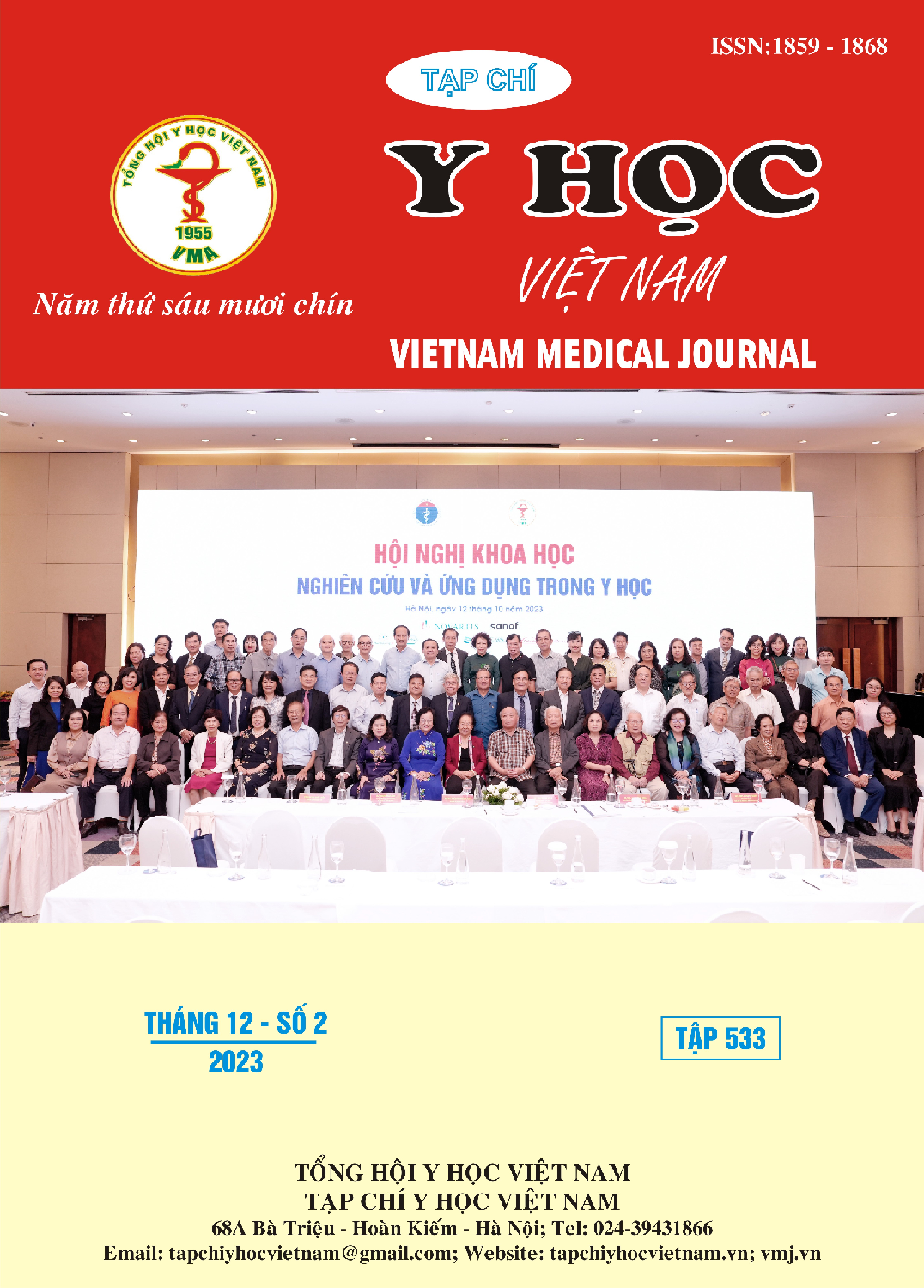OUTCOMES OF EMERGENCY LAPAROSCOPIC SURGERY FOR BLADDER RUPTURE IN POLYTRAUMA PATIENTS AT VIET DUC HOSPITAL
Main Article Content
Abstract
Objective: To evaluate the treatment outcomes of emergency laparoscopic surgery for bladder rupture in polytrauma patients at Viet Duc Hospital, aiming to share experiences in multidisciplinary collaborative treatment. Patients and method: A cross-sectional study was conducted on 71 patients with bladder rupture treated at Viet Duc Hospital. Results: Among the total of 71 patients in the study, the most common age group was <30 years old, accounting for 35/71 patients (49.3%), followed by the age group of 31-50 years old with 26/71 patients (36.6%). The average age in the study group was 34.5 ± 12.8 years old. The main causes were traffic accidents (81.7%) and occupational accidents (15.5%). Traumatic shock accounted for 36.6%, and 2.8% of patients had phúc mạc inflammation. X-ray results showed pelvic bone fractures in 11.3% of cases. CT scan results indicated injuries at the bladder dome in 38 cases (53.5%) and injuries on both sides of the bladder in 46.5% of cases. Pelvic artery embolization was performed in 100% of cases, while organ artery embolization was performed in 50% of cases. Laparoscopic suturing of the bladder rupture was subsequently carried out. The highest rate of urinary catheter removal after 6 days was 93%. Conclusion: The combination of minimally invasive interventions using embolization of organ arteries (liver, spleen, pelvic bone fracture) in polytrauma patients with bladder rupture is an effective and safe treatment approach.
Article Details
References
2. Lê Việt Khánh, Trần Bình Giang (2017), “Nghiên cứu ứng dụng của phẫu thuật nội soi chẩn đoán và điều trị các thương tổn tạng rỗng trong chấn thương bụng kín”, Luận án Tiến sỹ Y học Trường Đại học Y Hà Nội.
3. Nguyễn Xuân Toàn, Ngô Xuân Thái (2014), “Đánh giá kết quả phẫu thuật nội soi trên chấn thương bụng kín có vỡ bàng quang trong phúc mạc”. Y Hoc TP. Ho Chi Minh, 18, 45 – 50.
4. Nguyễn Hồng Thanh (2012), “Đánh giá kết quả điều trị phẫu thuật vỡ bàng quang do chấn thương tại Bệnh viện Việt Đức từ tháng 1/2008 – tháng 6/2012”, Luận văn thạc sỹ y khoa, Đại học y Hà Nội.
5. Nguyễn Ngọc Đức (2016) “Đánh giá kết quả can thiệp nội mạch chảy máu do vỡ xương chậu” Luận văn bác sỹ nội trú đại học Y Hà Nội
6. Nguyễn Ngọc Toàn. (2014). Nghiên cứu điều trị gãy khung chậu không vững bằng khung cố định ngoài. Luận văn tiến sỹ y học. Học viện quân Y.
7. Geeraerts T., Chhor V., et al, (2007). Review: Clinical Review: Initial management of Blunt Pelvic Trauma Patients with Haemodynamic instability. Critical Care, 11(1), pp. 1-09.
8. Pavelka T. (2010). Urogenital trauma associated with pelvic ring fractures. Acta Chir Orthop Traumacol Cech, 77(1), pp. 18- 23.


